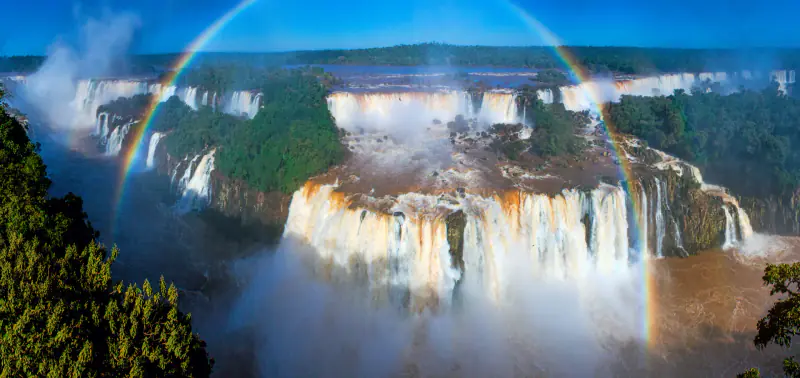UNESCO World Heritage Sites in Argentina
Heritage Overview
Argentina's UNESCO World Heritage sites reflect extraordinary geological diversity, indigenous cultural heritage, and colonial history spanning from sub-Antarctic regions to subtropical rainforests. The country preserves some of South America's most spectacular natural landscapes alongside archaeological sites documenting pre-Columbian civilisations and Jesuit missionary endeavours that shaped the continent's cultural development. Dramatic natural wonders showcase exceptional biodiversity and geological phenomena, from towering waterfalls shared across international boundaries to massive glacier systems and unique desert formations. These sites represent critical ecosystems protecting endangered species and demonstrating ongoing geological processes across diverse climate zones. Prehistoric rock art sites preserve thousands of years of indigenous artistic expression and spiritual significance. Colonial heritage encompasses Jesuit mission settlements that represent remarkable cultural exchange between European missionaries and indigenous Guaraní communities, creating distinctive architectural and social systems. These missions demonstrate early experiments in communal living and cultural preservation. Together, Argentina's heritage sites illustrate the nation's geographical extremes, from Andean peaks to Atlantic coast, whilst preserving evidence of human adaptation and cultural development across dramatically different environments throughout millennia.
Essential Information
Visa Requirements
Argentina offers visa-free entry to citizens of most Western countries, including the United States, Canada, European Union, Australia, and Japan, for stays up to 90 days. Visitors must present passports valid for the duration of their stay. A reciprocity fee was previously required but abolished in 2016. Visa requirements exist for some Asian, African, and Middle Eastern nationalities, requiring applications through Argentine consulates. Entry extensions can be obtained through immigration offices or by brief trips to neighbouring countries. Ensure you receive an entry stamp, as overstaying carries fines and potential future entry restrictions.
Currency
The official currency is the Argentine Peso (ARS), subject to significant inflation and exchange rate fluctuations. Multiple exchange rates exist: the official rate, the "blue" dollar (parallel market), and tourist rates. Credit cards are widely accepted in cities, hotels, and restaurants, but often apply unfavourable official rates. ATMs dispense pesos with daily withdrawal limits (typically 40,000-80,000 pesos) and charge high fees. Bringing US dollars or euros for exchange at "casas de cambio" (exchange houses) typically provides better rates than ATMs. Cash remains essential for smaller establishments, markets, and rural areas. Payment apps like Mercado Pago are increasingly popular domestically.
Language
The official language is Spanish, spoken with a distinctive Argentine accent and vocabulary including Italian influences and local slang (lunfardo). English proficiency is moderate in Buenos Aires and tourist areas but limited in rural regions and smaller cities. Tourism professionals typically speak some English, whilst younger generations have increasing proficiency. Portuguese is understood in border regions. Italian is occasionally spoken by older generations. Signage and menus in tourist areas often include English translations. Learning basic Spanish phrases significantly enhances travel experiences. Argentine Spanish uses distinctive pronunciation, particularly the "ll" and "y" sounds (pronounced "sh").
Climate
Argentina's vast geography creates diverse climates across regions. Buenos Aires and the Pampas experience temperate conditions with hot, humid summers (December-February) reaching 30-35°C and mild winters (June-August) averaging 10-15°C. The northwest features hot, dry summers and mild winters. Patagonia in the south experiences cold, windy conditions year-round with summer temperatures rarely exceeding 20°C and winter freezing temperatures. The northeast has subtropical climate with hot, humid summers and mild winters. Spring (September-November) and autumn (March-May) offer pleasant conditions for most regions. Summer (December-February) suits Patagonia and southern regions, whilst winter attracts visitors to northern and central areas seeking warmer weather.
